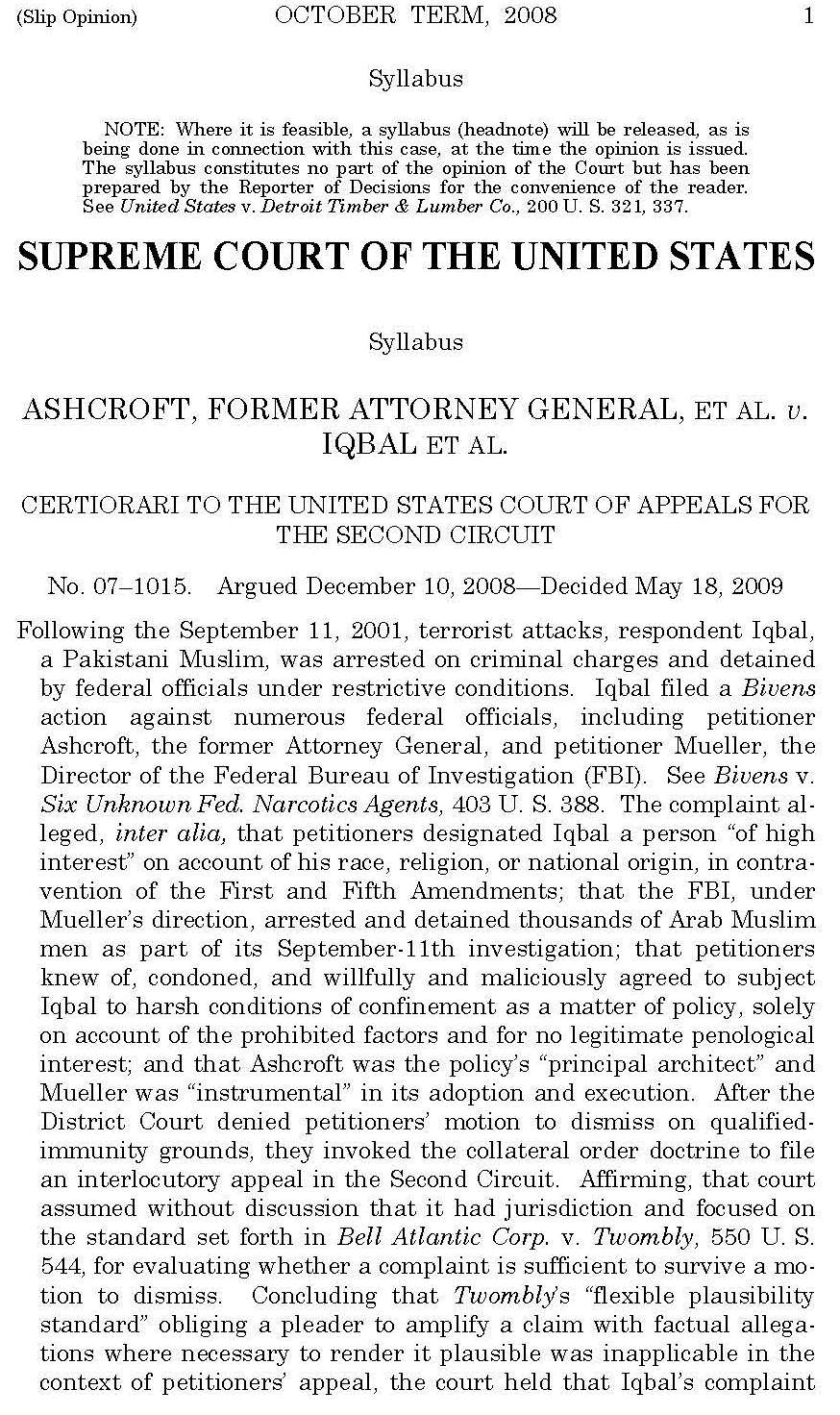 Defendants are frequently and justifiably annoyed by the usual style of pleading in ADA accessibility cases. It appears that a few courts, although a minority, have begun to apply ordinary federal pleading standards to these claims, which will make it much easier to obtain dismissal of those without real merit.
Defendants are frequently and justifiably annoyed by the usual style of pleading in ADA accessibility cases. It appears that a few courts, although a minority, have begun to apply ordinary federal pleading standards to these claims, which will make it much easier to obtain dismissal of those without real merit.
Many ADA plaintiffs are cagey, to say the least, about exactly what barriers they encountered, when they encountered them, and what effect the encounter had. A typical shopping center lawsuit, for example, may allege that there are cross slopes, improperly marked handicapped parking, and ramps that are too steep, but will not identify the location of the cross slopes, parking or ramps. The date or dates on which the plaintiff encountered these barriers will not be stated, and there will be only the most general allegation that the plaintiff was, as a result of these conditions, unable to have access to the center.
While there is no obvious legitimate reason for such vague pleadings there are a few obvious illegitimate ones. One could easily infer that the plaintiff never left his or her car because there was never any intention to actually go into a store. It is also possible that the complaint was made deliberately vague in order to keep the owner from remediating before the plaintiff’s counsel could earn fees. The omission of dates may be critical because in some cases the plaintiff has simply moved from one location to the next looking for barriers, and if the defendants could easily determine that a number of suits were filed for barriers encountered in a short time a challenge to standing would become much easier. Finally, the case law is mixed on whether a plaintiff can base claims on barriers never encountered, so a plaintiff may be reluctant to limit his or her suit by being specific about which barriers were encountered.
Three recent cases illustrate the very different ways in which District Courts deal with these typical pleadings. The more common approach is found in Lugo v. 141 NW 20th St. Holdings, 878 F.Supp. 1291 (S.D. Fla. 2012). The Court’s response to the failure to specifically identify barriers other than by type was simply to invoke the defendant’s right to discovery. The Court also found that the failure to plead that the defendant encountered each alleged barrier was no basis for dismissal, and that the fact the allegations were cut and pasted from other complaints was a fact beyond the four corners of the pleading that could not be considered. In short, a generic list of barriers cut from another pleading was sufficient to satisfy the requirements of Iqbal-Twombly.
A much different approach was employed in National Alliance for Accessibility, Inc. v. Annapolis Plaza, LLC, 2013 WL 245771 (D. Md 2013). Faced with a generic list of barriers to access the Court found that the pleading did not satisfy Iqbal-Twombly because the allegation that plaintiff “has encountered architectural barriers” was merely a conclusion couched as a factual allegation. Allegations that certain aspects of the property did not meet ADAAG guidelines were also inadequate because there were no specific facts to support that conclusion. Finally, the Court did consider the fact that the plaintiff’s complaint was “filled with boilerplate” allegations when it decided that the complaint would be dismissed for failure to state a claim.
In Hoewishcer v. Park Shopping, Ltd, 2011 WL 4837259 (M.D. Fla. 2011) the District Court denied a Motion for Default Judgment based on an inadequate pleading. The Court found that “despite the list of barriers” in the pleading, the failure to allege how each barrier affected the plaintiff “the Court cannot discern what injuries Plaintiff actually suffered.” The Court also found that the pleading failed to adequately allege that barrier removal was readily achievable, finding that some allegation of facts regarding each of the four statutory considerations for what constitutes readily achievable was required.
There is little doubt that National Alliance and Hoewischer reflect the proper application of Iqbal-Twombly. Iqbal and Twombly dealt with misconduct whose details were at best difficult for the plaintiff to discover because the plaintiff never witnessed the wrongdoing. Nonetheless, the Supreme Court required sufficient factual detail to support the claims. In an ADA case the plaintiff has necessarily encountered the barrier to access about which he or she complains. The plaintiff knows exactly where the barrier is, exactly what is wrong, and exactly why that particular barrier deprived the plaintiff of the ability to take advantage of the goods and services offered. There is no excuse for the plaintiff to plead general allegations or include generic lists of barriers to access except the illegitimate excuse that vague pleadings make it more difficult for the defendant to obtain early dismissal without the expense that drives most ADA settlements.
ADA defendants who find it worthwhile to contest the case at the pleading stage should keep these cases, and others like them, in mind because there is no doubt that applying Iqbal-Twombly to many ADA complaints would result in a dramatic decrease in abusive ADA lawsuits without diminishing the effectiveness of the statute itself.

